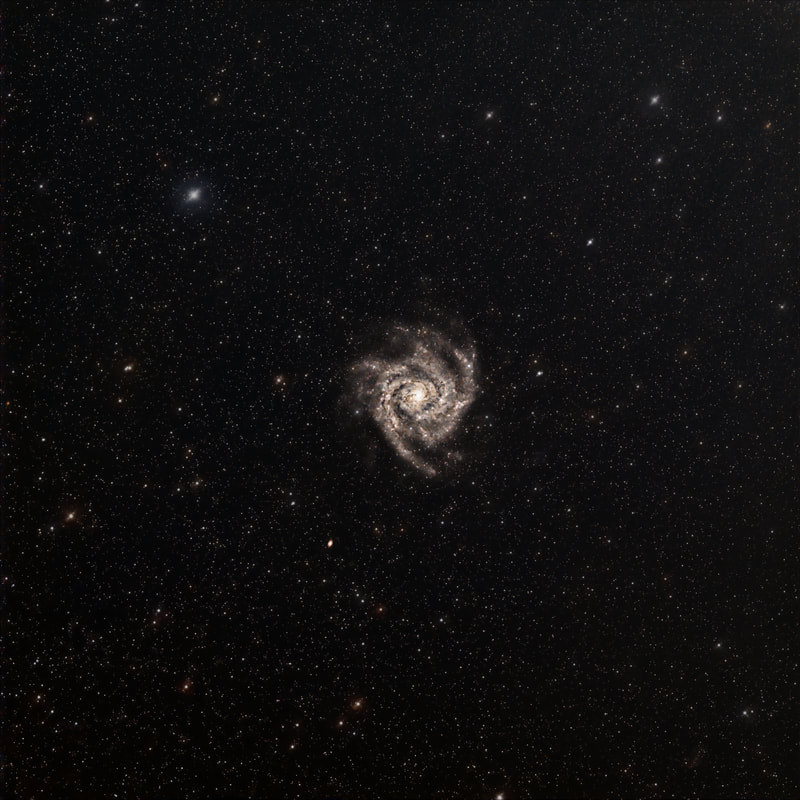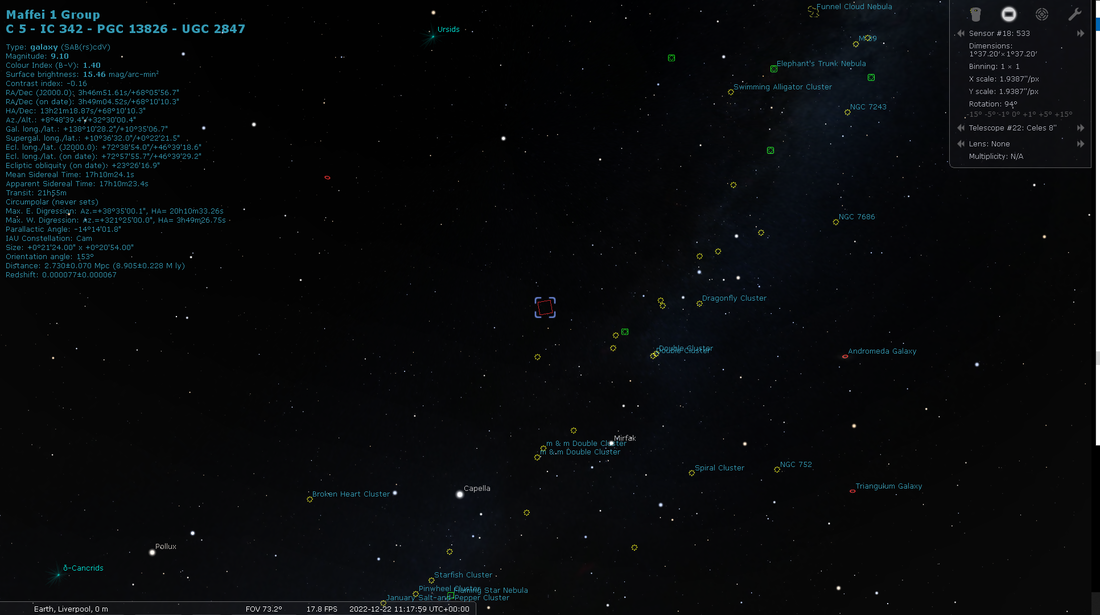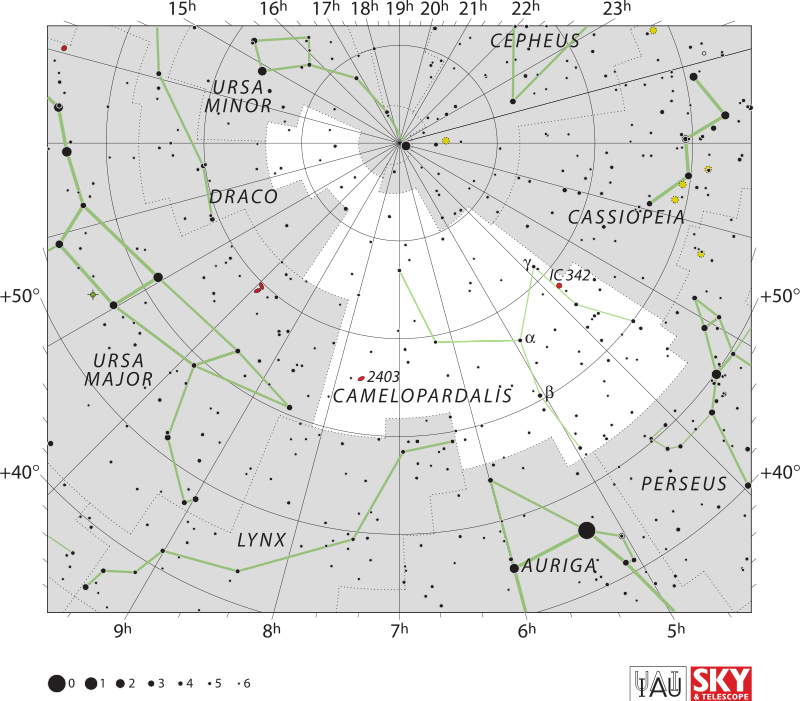The intermediate spiral galaxy IC 342 (sometimes referred to as Caldwell 5) is situated in the constellation Camelopardalis and is relatively near the Milky Way. Its placement behind dusty regions close to the galactic equator makes it difficult to notice despite its size and true brightness, earning it the moniker "The Hidden Galaxy" even though it can easily be seen even with binoculars. The galaxy would be visible to the unaided eye if it weren't hidden. It is difficult to pinpoint its exact distance due to the dust; current estimates range between 7 and 11 Million light-years (Mly) William Frederick Denning found the galaxy in 1892.
One of the galaxy groups nearest to the Local Group, the IC 342/Maffei Group, it is one of the brightest in the group. Although it was later discovered that it was not a member, Edwin Hubble initially believed it to be a part of the Local Group.
One of the galaxy groups nearest to the Local Group, the IC 342/Maffei Group, it is one of the brightest in the group. Although it was later discovered that it was not a member, Edwin Hubble initially believed it to be a part of the Local Group.
It was discovered by Harlow Shapley in 1935 to be wider than the full moon and the third-largest spiral galaxy at the time in terms of angular size, after the Andromeda Galaxy (M31) and the Triangulum Galaxy (M33). (Modern estimates are more conservative; they state that the apparent size is between half and two thirds of the full moon's diameter.) Its nucleus is made up of H II. The galaxy is 75,000 light-years across.
The first dwarf spheroidal satellite of IC 342 was discovered to be the galaxy KKH 32 in 2020. IC 342 features a disproportionately small number of dwarf satellite galaxies compared to galaxies with prominent bulges like the Andromeda Galaxy.
The first dwarf spheroidal satellite of IC 342 was discovered to be the galaxy KKH 32 in 2020. IC 342 features a disproportionately small number of dwarf satellite galaxies compared to galaxies with prominent bulges like the Andromeda Galaxy.
This Galaxy was hard to process, due to the foreground dust lanes from the nearby spiral arm. of our galaxy.
This is an extremely faint object which requires a lot of hours to get detail. Even 2 1/2 hours on the RASA is still not enough data for this target.
- This was a total of 2hours 30 mins of data at 30 sec sub exposures using the following setup:
- Scope – Celestron RASA 8
- Mount - Skywatcher EQ6 R Pro
- Guide scope – ZWO 30mm
- Guide Camera – ZWO ASI 120mm mini
- Main Camera – ZWO Asi 533mc Pro
- Control box – ZWO ASIAIR Pro
- Filter – Baadar UV/ IR filter
- Starizona Filter drawer next to the camera sensor
- Fox Halo 96k power bank
- Dew heater with its own power bank on the guide scope
This is an extremely faint object which requires a lot of hours to get detail. Even 2 1/2 hours on the RASA is still not enough data for this target.


